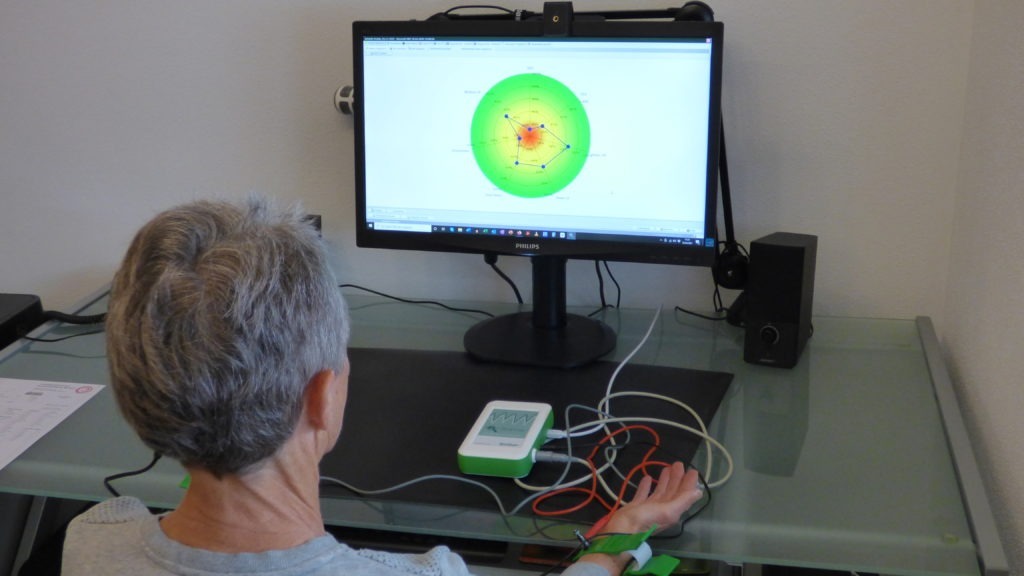
Heart Rate Variability Analysis
The term heart rate variability describes the continuously varying rhythm of the heart rate. Even if it is not consciously perceptible, the heart rhythm in healthy people changes regularly by creating a slight time deviation from one heartbeat to the next. This deviation is an indication of the body’s ability to adapt to occurring loads. A heart rate variability analysis can identify possible disruptions to this natural mechanism and initiate individually appropriate measures.
HRV-Technology
In my practice, I use technical support to measure heart rate variability. I observe and check not only the heart rate but also the breathing rhythm. The HRV technology compares the various data and draws conclusions about possible problems and the appropriate treatment options.

You would like to get advice?
When does a HRV-measurement make sense?
People who are particularly stressed can develop heart problems. This affects, for example, high-performance athletes or people with high professional or family stress. At the same time, the risk of cardiovascular problems also increases with age. However, the HRV analysis can also be used to assess one's own resilience to everyday challenges, the general state of health and one's own stress level. It is advisable to keep an eye on your own heart health as a preventive measure and to regularly check your stress level and state of health. The heart rate variability analysis can thus be a useful and necessary step to develop suitable treatment and prevention options.
How is a HRV-measurement usually carried out?
An HRV measurement is usually carried out with electrocardiogram devices in my practice. A measurement at rest is followed by a shorter measurement with an additional task that shows how the HRV changes under minimal stress compared to the measurement at rest. The results are then evaluated and discussed.
What are the goals of HRV-measurements?
It is never too early to prevent health problems - this is particularly true of the human heart. The prevention and early detection of serious diseases is an important goal of a heart rate variability analysis. Apart from acute diseases or coronary health, the HRV analysis can also provide information about the state of the nervous system. The difference between the heartbeats is an important indicator of how well the two nerves, sympathetic and parasympathetic nerve, are working together and how balanced the state of the nervous system is at the moment. A low heart rate variability can indicate a control problem in the nervous system, which is often accompanied by diffuse symptoms such as physical restlessness, mental imbalance, irritability, digestive problems, breathing problems but also chronic tension and pain or chronic diseases.
An HRV analysis also enables an assessment of the current stress level on the one hand and the available coping skills on the other. Based on the results of HRV measurements, possible or necessary therapeutic measures can be derived and ideal preventive steps can be found. The effectiveness of the selected measures can also be checked by repeated measurements.
The treatment methods described here and on further pages originate from empirical medicine. The majority of these established, medical therapy methods have not yet been sufficiently scientifically validated according to the principles of evidence-based medicine (orthodox medicine). In particular, randomized, controlled studies or comprehensive meta-analyses do not yet exist. A success of the empirical medical therapy forms cannot be guaranteed in every treatment case.
